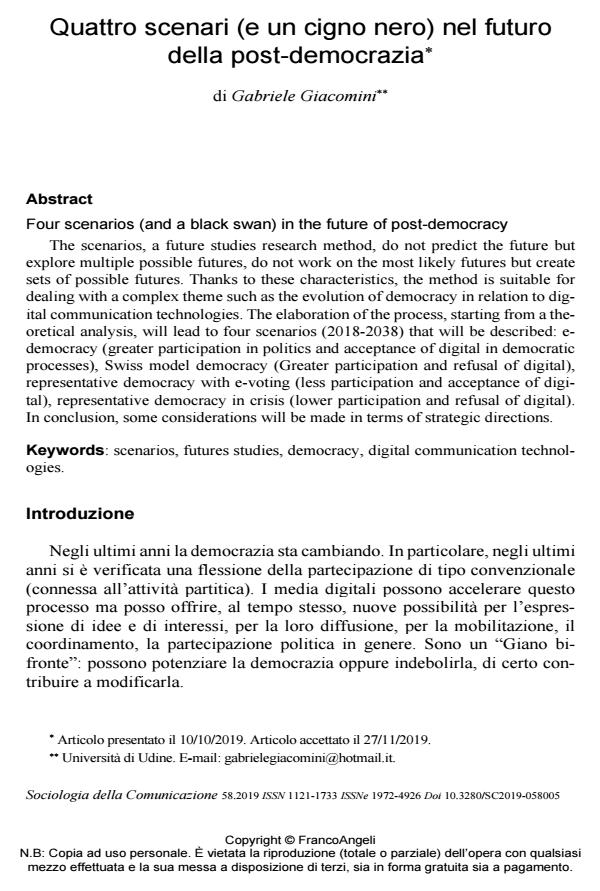Four scenarios (and a black swan) in the future of post-democracy
Journal title SOCIOLOGIA DELLA COMUNICAZIONE
Author/s Gabriele Giacomini
Publishing Year 2020 Issue 2019/58
Language Italian Pages 24 P. 79-102 File size 344 KB
DOI 10.3280/SC2019-058005
DOI is like a bar code for intellectual property: to have more infomation
click here
Below, you can see the article first page
If you want to buy this article in PDF format, you can do it, following the instructions to buy download credits

FrancoAngeli is member of Publishers International Linking Association, Inc (PILA), a not-for-profit association which run the CrossRef service enabling links to and from online scholarly content.
The scenarios, a future studies research method, do not predict the future but explore multiple possible futures, do not work on the most likely futures but create sets of possible futures. Thanks to these characteristics, the method is suitable for dealing with a complex theme such as the evolution of democracy in relation to digital communication technologies. The elaboration of the process, starting from a theoretical analysis, will lead to four scenarios (2018-2038) that will be described: e-democracy (greater participation in politics and acceptance of digital in democratic processes), Swiss model democracy (Greater participation and refusal of digital), representative democracy with evoting (less participation and ac-ceptance of digital), representative democracy in crisis (lower participation and re-fusal of digital). In conclusion, some considerations will be made in terms of stra-tegic directions.
Keywords: Scenarios, futures studies, democracy, digital communication tech-nologies.
Gabriele Giacomini, Quattro scenari (e un cigno nero) nel futuro della post-democrazia in "SOCIOLOGIA DELLA COMUNICAZIONE " 58/2019, pp 79-102, DOI: 10.3280/SC2019-058005